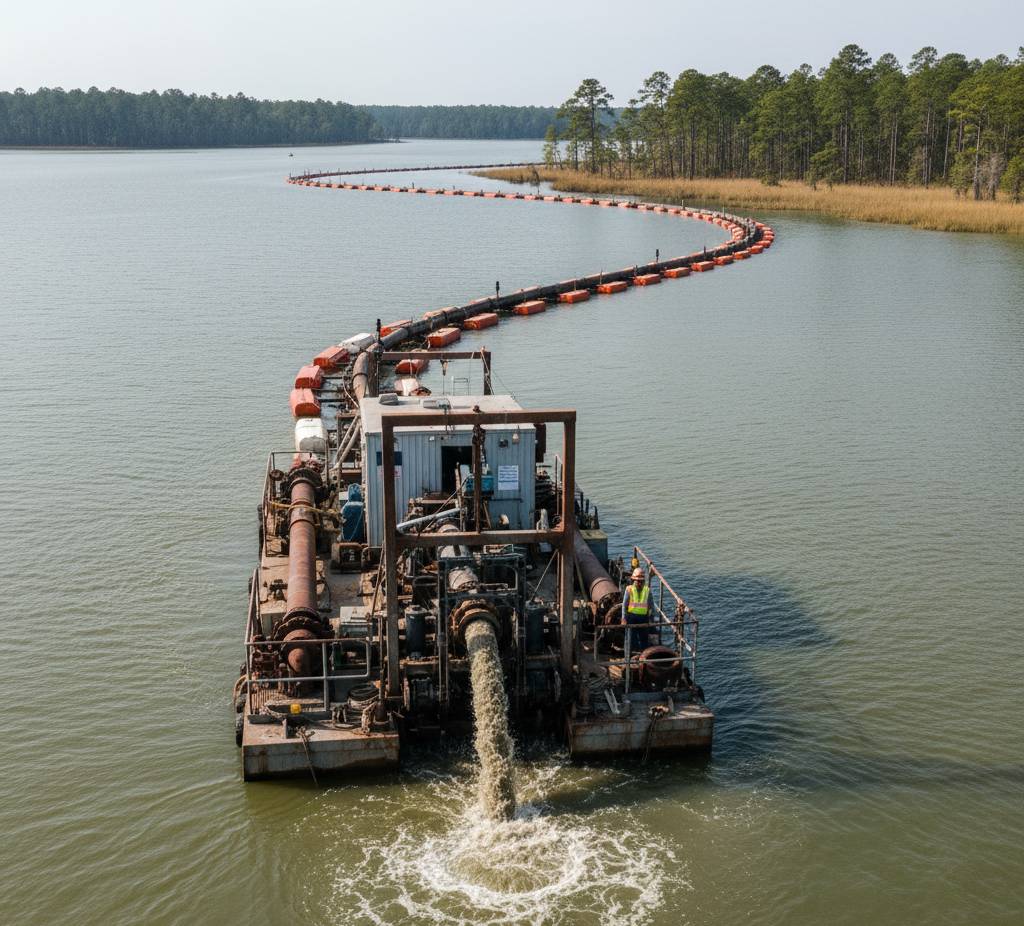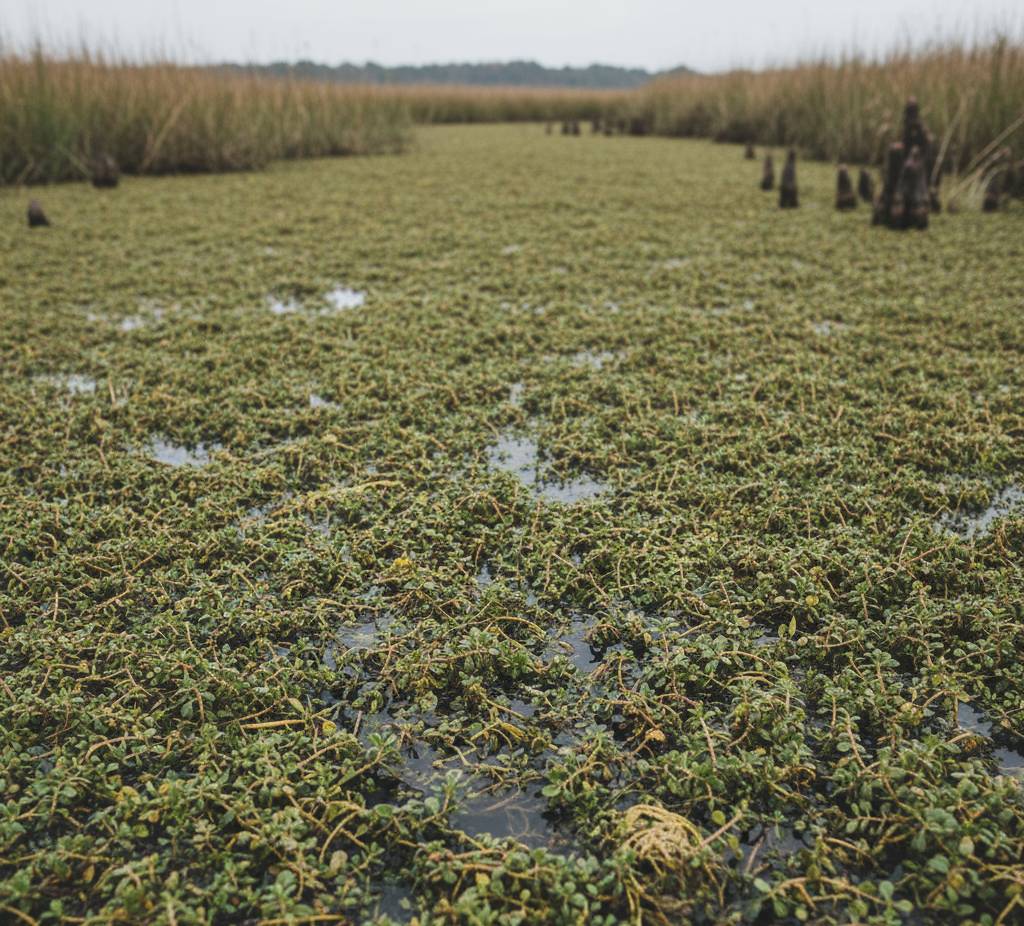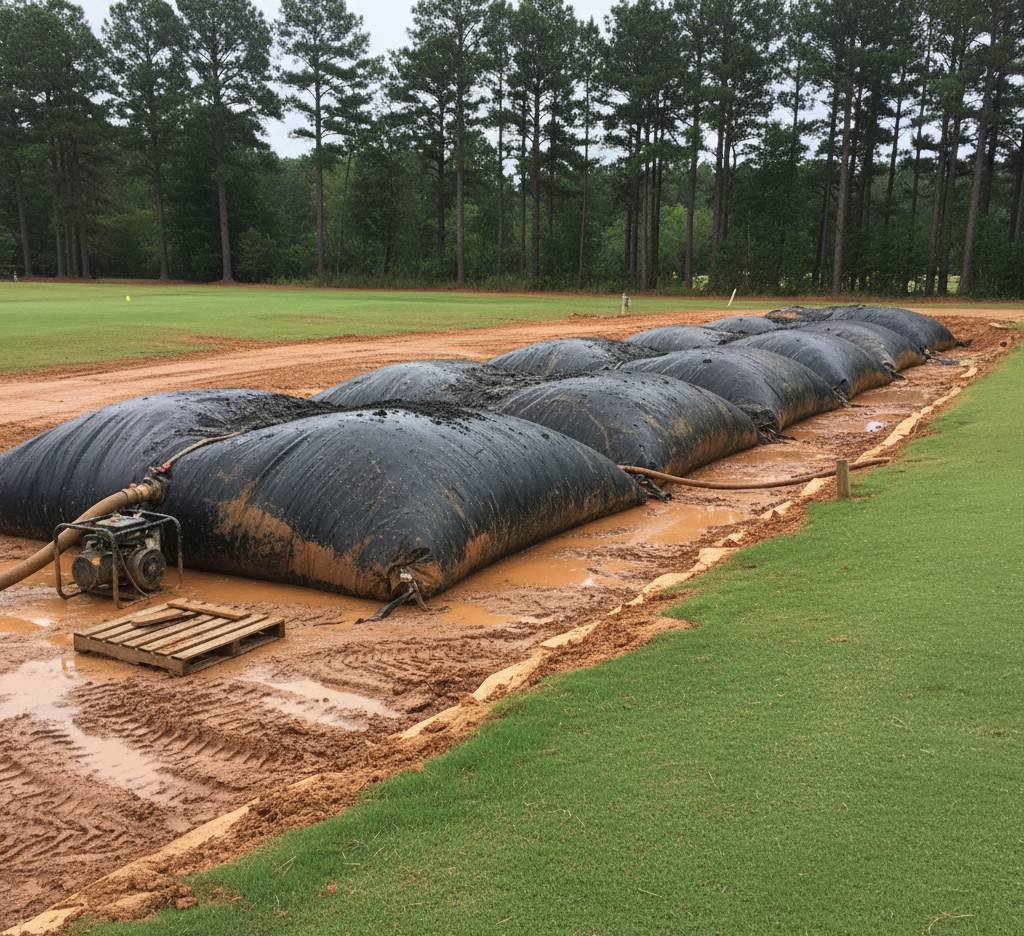Charleston Region Dredging Specialists
Professional Dredging Services in Ladson, SC in the Charleston Region
Expert dredging for coastal tidal systems, inland freshwater environments, and everything in between. From Charleston Harbor marinas to Summerville retention ponds, we restore and maintain waterways throughout the greater Charleston-Beaufort region.
- Marina & Harbor Dredging
- HOA & Retention Ponds
- Golf Course Lakes & Lagoons
- Storm & Flood Sediment Removal
- Coastal & Freshwater Systems
Why Choose Us for Charleston Region Dredging
Serving Ladson and the greater Charleston-Beaufort region with expertise in both coastal tidal systems and inland freshwater environments.
Coastal & Inland Expertise
From the salt marshes of Hilton Head to the freshwater ponds of Summerville, we handle diverse aquatic environments. Our team understands tidal creeks, brackish waterways, retention basins, golf course lakes, and residential ponds across the entire Charleston metro area.
Storm & Flood Recovery
After hurricanes, tropical storms, and heavy rain events, properties throughout the region face sediment buildup. We provide rapid response for coastal storm surge damage, inland flooding impacts, and stormwater system restoration to help communities recover quickly.
Resort, Golf & Community Waterways
From Kiawah Island coastal lagoons to Summerville neighborhood ponds and Moncks Corner lakefront properties, we maintain the aesthetic and functional water features that define Lowcountry living. Our work preserves water quality, prevents algae growth, and protects property values.
Specialized Equipment Fleet
We maintain equipment for every environment—saltwater-resistant systems for coastal work, and specialized machinery for inland freshwater ponds, retention basins, and lake systems. Whether it's a tidal marina in Mount Pleasant or a HOA pond in Goose Creek, we have the right tools.
Environmental Sensitivity
We work carefully in both coastal and inland sensitive habitats. From protecting oyster beds and marsh grass in tidal areas to preserving freshwater ecosystems and wildlife in inland ponds and lakes, we respect the diverse environments throughout the Charleston region.
Local Regulatory Knowledge
We navigate permits and regulations across jurisdictions—from SCDHEC-OCRM coastal permits to county stormwater requirements. Our experience with Charleston, Berkeley, and Beaufort county regulations ensures smooth project approval and compliance.
Our Dredging Services
Comprehensive solutions for Ladson waterways, from residential ponds to commercial marinas

Mechanical Dredging
Ideal for tight access, shallow coves, and dock and shoreline work on lakes like Lake Murray, Lake Keowee, and Lake Greenwood. We use sectional barges for precision sediment removal in smaller HOA lakes and ponds, handling heavy red clay and dense debris.

Hydraulic Sediment Removal
Best for large-scale operations on major water bodies such as Lake Marion and Lake Moultrie, and long reaches of ICW canals. We pump fine silt and muck over long distances to remote dewatering sites or tidal systems.

Comprehensive Sediment Management
A turnkey approach that ensures compliance with SCDHEC guidance. This includes on-site dewatering using methods suitable for diverse SC soils (sandy Lowcountry versus clay-heavy Upstate) and approved disposal or beneficial reuse planning.

Aquatic Vegetation Management
Targeted removal of aggressive SC aquatic weeds—like hydrilla, alligator weed, and elodea—to combat the effects of shallow water and nutrient-rich sediment that cause severe algal blooms.

Sediment Dewatering Solutions
Installation and management of Geotextile tubes for efficient dewatering on HOAs, golf courses, and resort communities. We also design and manage upland pad drying operations where available land permits.

Continuous Waterway Management
Post-event cleanup and maintenance after major storms or hurricanes. We offer season-based lake management programs to prevent the re-accumulation of sediment and preserve depths after major summer lake traffic.
Ready to Restore Your Ladson Waterway?
Contact us today for a free consultation and project estimate. Our team is ready to help you plan your dredging project around storm seasons, tourism schedules, and HOA timelines. We work with property managers, resort communities, and marina operators throughout the Lowcountry.
Get a Detailed Quote Give Us a CallFrequently Asked Questions
Common questions about dredging services in Ladson and the Charleston region
We handle a wide range of projects across the Charleston region's diverse waterways. In coastal areas like Mount Pleasant, Hilton Head Island, and Beaufort, we dredge marinas, tidal creeks, ICW-connected channels, and resort lagoons. In inland communities like Summerville, Goose Creek, Hanahan, and Moncks Corner, we maintain HOA ponds, retention basins, golf course lakes, and residential water features. We also service stormwater systems, boat ramps, and private docks throughout the region. Each environment requires different techniques and equipment, and we're equipped for both saltwater and freshwater conditions.
Permitting requirements vary significantly based on location and project type. Coastal projects in tidal waters typically require SCDHEC-OCRM permits and potentially U.S. Army Corps of Engineers approval, especially near shellfish beds, salt marshes, or navigable waters like Charleston Harbor. Inland projects in areas like Summerville or Moncks Corner may require county stormwater permits or HOA approval but generally face less stringent regulatory review. Small, privately-owned ponds with no discharge to waters of the state often have simpler requirements. We recommend contacting your local jurisdiction early in planning, and we're happy to share guidance based on our experience with similar projects in your specific area.
Timing depends on your location and project type. For coastal areas (Hilton Head, Beaufort, Mount Pleasant), late fall through early spring is ideal—avoiding peak tourism, hurricane season, and wildlife nesting periods. For inland communities (Summerville, Goose Creek, Ladson), timing is more flexible, though many HOAs prefer cooler months when residents are less likely to be using amenities. Summer heat can create algae blooms in freshwater ponds, making spring or fall preferable. Moncks Corner lake projects may need to consider water level fluctuations. We work with clients to identify the optimal window based on your specific location, usage patterns, and any regulatory restrictions.
The differences are significant. Coastal dredging in areas like James Island or Port Royal involves tidal planning, saltwater-resistant equipment, brackish sediments, and stricter environmental regulations protecting oyster beds and marsh ecosystems. We often use silt curtains and time work around tide cycles. Inland dredging in places like Hanahan or Goose Creek deals with freshwater ponds, organic muck, algae control, and stormwater system considerations. Equipment needs differ—saltwater requires corrosion-resistant machinery while freshwater allows standard equipment. Regulatory oversight is typically lighter for inland projects. We maintain specialized equipment for both environments and tailor our approach to your specific location.
Dredging can address certain flooding problems, but the solution depends on your location and flood cause. In coastal areas experiencing king tide flooding or tidal creek blockages, dredging can restore drainage capacity and improve water flow. In inland areas dealing with stormwater retention basin sedimentation, dredging restores designed capacity for heavy rain events. However, dredging alone may not solve flooding from sea level rise, inadequate stormwater infrastructure, or regional drainage issues. Charleston and Berkeley County properties face different flood challenges than Beaufort County coastal areas. We assess your specific situation and recommend whether dredging will help, or if it should be combined with other measures like drainage improvements or shoreline stabilization.
Disposal options depend on sediment type and location. Coastal material may qualify for beneficial reuse—clean sand can be used for beach nourishment, dune restoration, or shoreline projects along the coast. Inland organic sediments from ponds can sometimes be used as fill material or soil amendment if testing shows they're contaminant-free. Material with contaminants requires approved upland disposal sites. For large projects, we arrange for proper disposal or beneficial reuse in compliance with county and state regulations. Small residential pond projects often allow on-site spreading if property owners have adequate space and material is suitable. We coordinate sediment testing and disposal planning as part of every project.
Timelines vary widely based on project scope. A small HOA pond in Summerville or Goose Creek might take 3-5 days. A residential lake in Moncks Corner could take 1-2 weeks. Larger community lagoons or golf course systems may require 2-4 weeks. Coastal marina projects in Mount Pleasant or Hilton Head often take several weeks to months, depending on tidal restrictions, permit requirements, and sediment volumes. Emergency storm recovery following hurricanes receives expedited attention when possible. We provide detailed schedules during planning and work efficiently to minimize disruption. Weather, equipment logistics, and regulatory windows can affect timelines, particularly for coastal projects with tidal or seasonal restrictions.
Costs vary significantly based on project size, location, accessibility, sediment type, and disposal requirements. Small residential ponds might range from $5,000-$15,000, while larger HOA ponds could be $20,000-$50,000+. Marina and commercial projects typically cost $50,000-$250,000+ depending on scale and complexity. Coastal projects generally cost more due to specialized equipment needs, tidal restrictions, and environmental compliance requirements. Projects requiring difficult access, contaminated sediment disposal, or extensive permitting add to costs. We provide free on-site assessments and detailed quotes after evaluating your specific situation. The best way to get accurate pricing is to contact us for a site visit and consultation.
Service Areas and Regions of South Carolina
We provide expert dredging services for private lakes, corporate ponds, and large-scale public waterways, covering the entire state from inland reservoirs to coastal marinas and tidal marsh systems.
1. Lowcountry & Coastal
The historic coastal plain defined by tidal marshes, barrier islands, and waterways like the Ashley, Cooper, and Edisto Rivers. This region features major port activity and extensive recreational waterways.
Key SC Locations:
2. Grand Strand & Coastal Pee Dee
Famous for its sandy beaches and tourism, this region is traversed by the Intracoastal Waterway (ICW) and the Waccamaw River. Its focus is on maintaining resort lagoons and battling sediment from beach sand runoff and coastal flooding.
Key SC Locations:
3. Midlands
The state's center, dominated by the Congaree, Broad, and Saluda Rivers, and home to major bodies of water like Lake Murray, Lake Marion, and Lake Moultrie. We serve the capital city and the state's largest lakes.
Key SC Locations:
4. Upstate – Greenville/Spartanburg Metro
Defined by the foothills of the Appalachian Mountains and major reservoirs like Lake Keowee, Lake Jocassee, and Lake Greenwood. Our work focuses on managing the influx of dense red clay sediment that flows into water bodies from surrounding terrain.
Key SC Locations:
5. Upstate – York County / Lake Wylie Region
The fastest-growing SC region, these suburbs are situated along the Catawba River and the Lake Wylie shoreline, sharing a distinct culture with the nearby Charlotte NC metro area. Dredging here is often for coves and erosion control.
Key SC Locations:
6. Central Savannah River Area (CSRA)
This region borders Georgia, utilizing the Savannah River system and connecting waterways. Projects often involve maintaining municipal, industrial, and private waterfronts influenced by the nearby Augusta metro area.
Key SC Locations:
Inquire for special projects outside these core SC areas, including nearby GA and NC border communities.